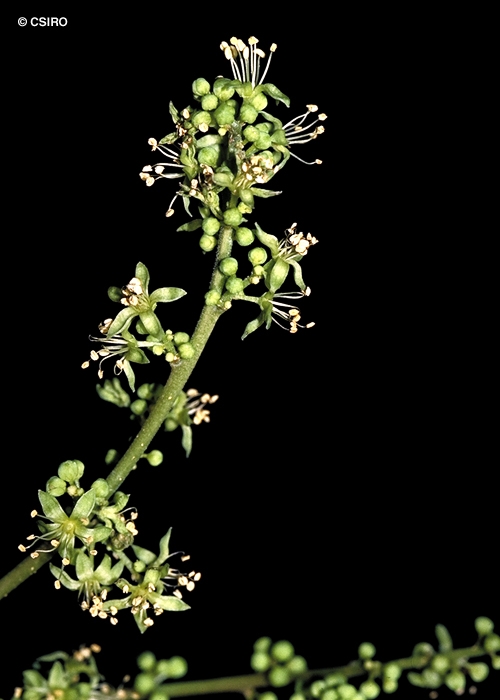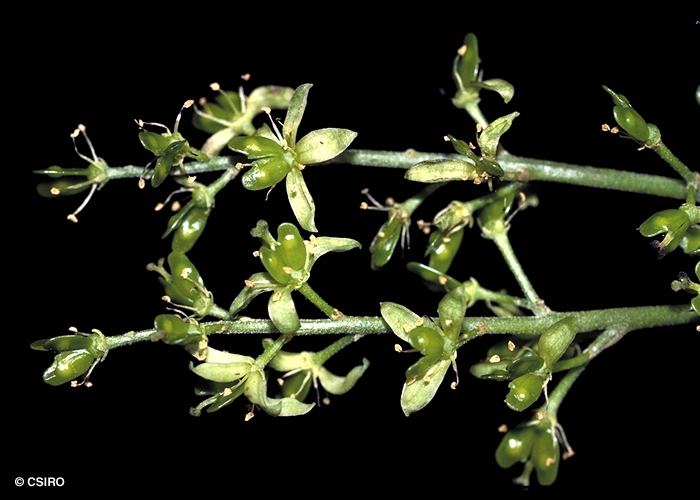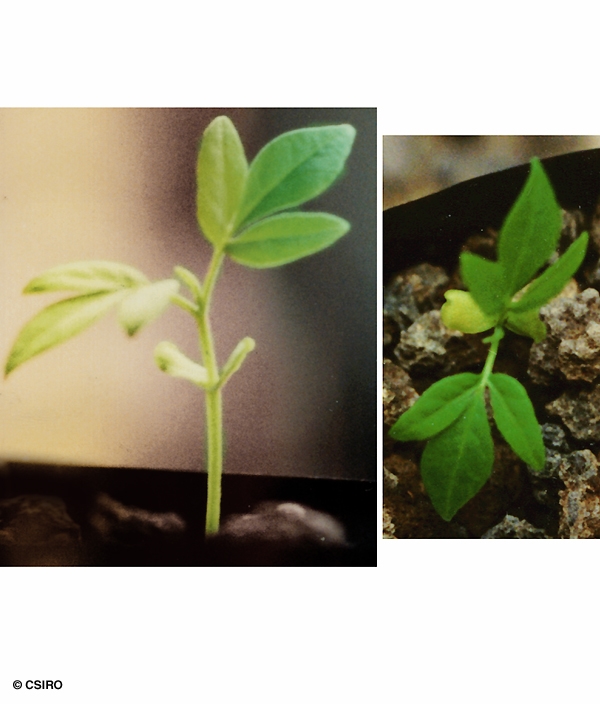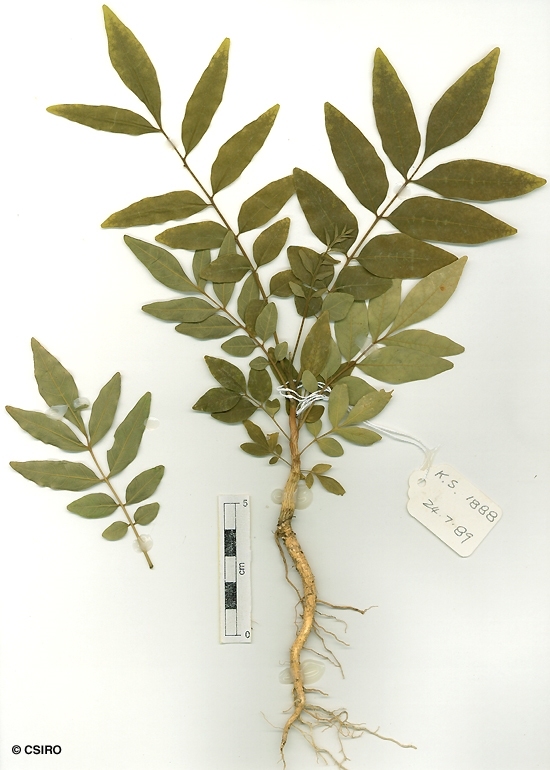Australian Tropical Rainforest Plants - Online edition
Ailanthus triphysa (Dennst.) Alston






Alston, A.H.G. (1931) A Handbook to the Flora of Ceylon pt. VI (= Supplement) : 41.
White Bean; Ash, Ferntop; Bean, White; Ferntop Ash; Siris, White; WHITE SIRIS
Outer blaze often marked with white, vertical stripes and some red markings.
Leaf bearing twigs 1 cm or more in diameter. Stipules very small. Leaflet blades falcate, about 5-12 x 0.9-2 cm, very unequal-sided particularly at the base. Lateral veins forming loops well inside the blade margin. Midrib raised in a depression on the upper surface of the leaflet blade. Numerous, closely spaced oil dots visible with a lens.
Fruits green to greenish brown, papery in texture. Samaras about 5-6 x 1-2 cm. Main vascular bundle to the seed connected to an intramarginal vein on the samara.
Cotyledons fleshy, without venation. First pair of leaves trifoliolate, subsequent leaves compound with more than three leaflets. At the tenth leaf stage: leaves pinnate, lateral leaflets slightly unequal-sided, midrib raised on the upper surface; terminal bud clothed in pale hairs. Seed germination time 18 to 20 days.
A fast growing tree that has a spreading leafy crown and would be useful as a shade or street tree for gardens in low rainfall areas.
If the bark is cut it exudes a treacly colourless resin which becomes brittle on drying. This was used in colonial times by Dr Lauterer, who found it made 'a good ointment for chronic ulcers, used pure or mixed with wax and lard. Fresh cuts and sores are not to be treated with this resin on account of the acrid oil.' Being aromatic, the resin has been used in India for making incense. Cribb (1981).





